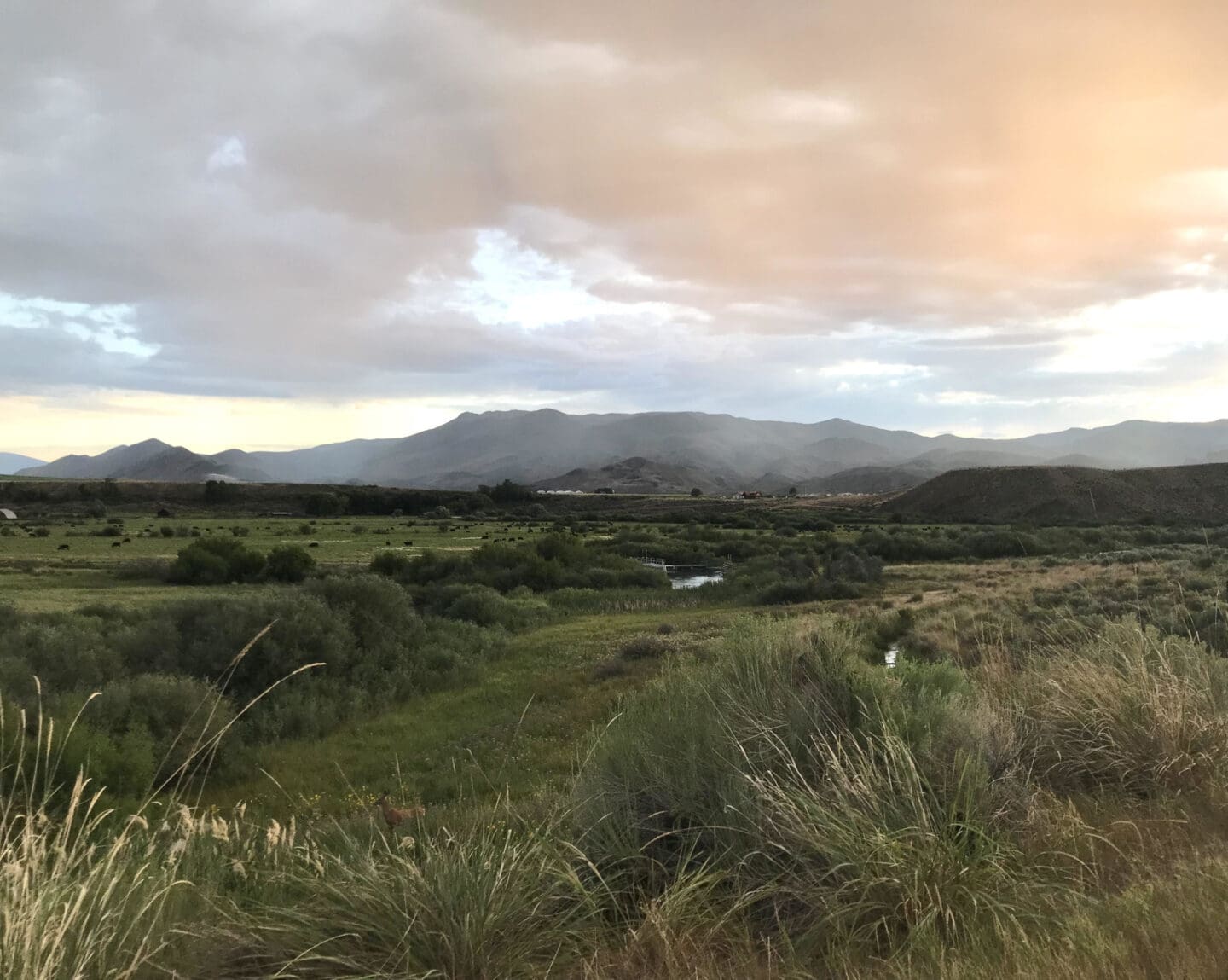Empowering experts with tools, techniques, and technology
When a community can live in harmony with grizzly bears and other wildlife, it leads to prolonged large-landscape connectivity.
One area this is particularly important for is the western states of the Yellowstone to Yukon region, including an area called the High Divide.
This connects the three biggest blocks of protected wildlife habitat in the Lower 48 states: The Greater Yellowstone, Salmon-Selway-Bitterroot, and Crown of the Continent ecosystems.
On this busy landscape, ranchers and their livestock are abundant, and grizzly bears are reoccupying their historical ranges in between recovery zones and showing up where they haven’t been seen in many decades.
Conflict between grizzly bears and livestock has increased over recent years, since livestock are an attractive food source, and grizzlies often rely on private rangelands as part of their migratory range.
One method of mitigating conflict between livestock and grizzly bears across the High Divide is to incorporate conflict-reduction tools and technologies onto ranch landscapes.
These tools are implemented to reduce human-wildlife conflict and negative interactions — ones that may end badly for the people or bears…or both.
Now, Allegra Sundstrom, a researcher who received Y2Y’s 2021 Sarah Baker grant, is using that support to better understand why some tools and techniques are more readily adopted and used by those communities.
What goes into wildlife-based decision making on ranch operations? Who better to ask than the people that deal with these issues day in and day out?
Conflict-reduction from a social science perspective
Allegra is a master’s student at Idaho State University, studying how people think about grizzly bears and ranch management practices, especially conflict-reduction tools. Her knowledge and expertise are well-suited to find out how and why ranchers choose to reduce conflict with grizzly bears and what leads to uptake of new tools and technology.
Conflict-reduction tools allow local communities to have some control over how they prevent negative interactions between livestock and predators. They include things like range riding, electric fencing, and livestock guardian dogs, all of which deter grizzly bears from depredating livestock.
Which tool provides the optimal solution to allow living in harmony with grizzly bears varies by location, terrain, and community, but there are a range of options that do not mean killing or relocating the bears. Range riders, electric fencing, livestock guardian dogs, and carcass removal, can be suitable options for ranch operations, depending on their individual needs.
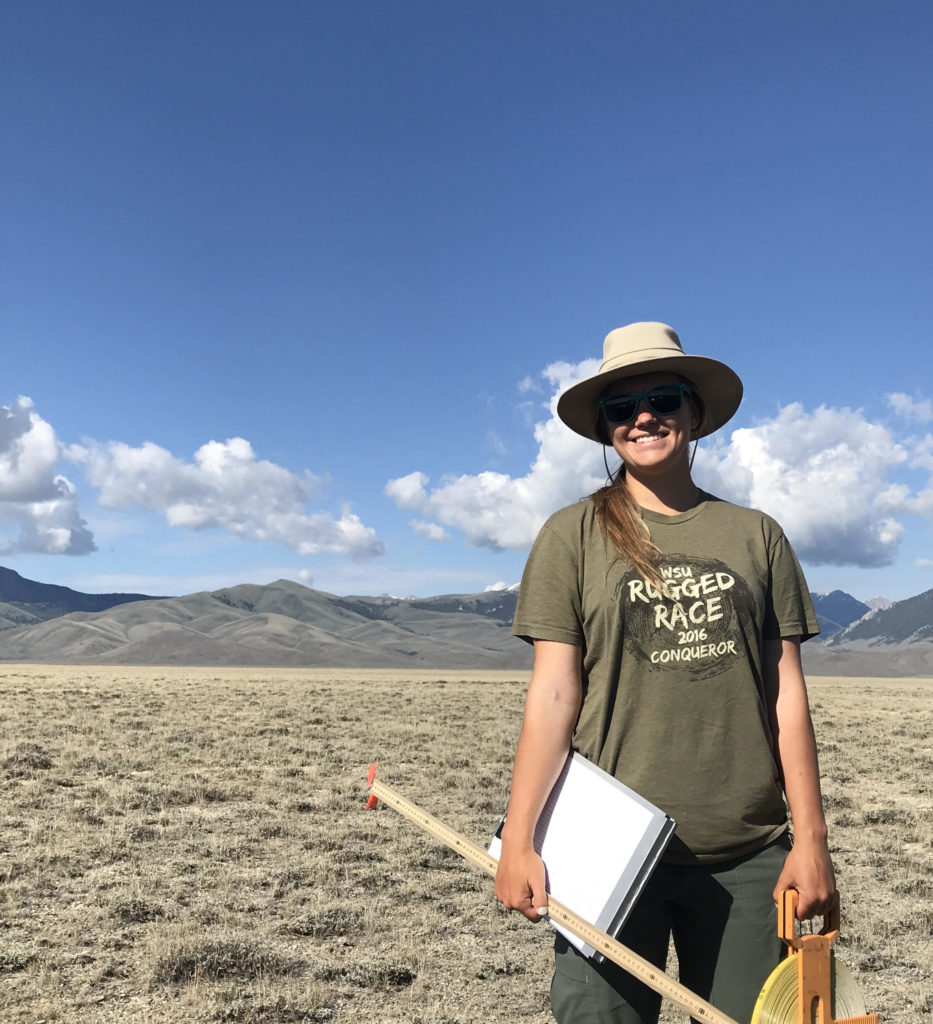
Many of these different tools have shown effective conflict reduction throughout research trials. However, some ranchers in the High Divide remain hesitant about implementing them, so, Allegra seeks to figure out why.
“It important for us to understand the human aspect of human-wildlife conflict,” says Allegra.
“Producer decision-making on ranch operations is focused on economic pressures, and risk management, but because ranching is a livelihood, producer decision-making equally reflects cultural values and pressure to maintain rural way of life. We find that ranchers are not making decisions to reduce predator conflict as if it were in a vacuum — they are considering drought, land subdivision, hay prices, wildlife interactions, and at the same time they are considering how shifting interactions with predators, like grizzlies, might influence their connection to the landscape,” she says.
Cultural loss, multi-generational heritage, and ranchers’ sense of place are impacted as both bears and people increase on the landscape. Ultimately, the decision to adopt or avoid conflict-reduction tools is rooted in all these economic and social factors.
Social science scholars can help uncover how social and cultural aspects shape ranchers’ values for the ecosystem, and then how those values inform decision-making about conflict with wildlife.
The “land in between”
The High Divide region sits between the two largest grizzly bear recovery zones – the Northern Continental Divide and Greater Yellowstone Ecosystems. Grizzly bear management at the federal level prioritizes the connectivity of these zones for genetic purposes, so new stories of bears traversing nearby valleys circulate through rural communities as the grizzly bear population expands.
For those living across the valleys of Southwest Montana, in between these recovery zones, conflict reduction is a pressing issue. Just like fruit trees and beehives that attract wildlife in residential areas, livestock, feed, and newborn calves can attract bears out on the range as well.
The safety risks as well as damage and costs associated with these situations can impact wildlife but also property, livelihoods, and people.
As bears increase in abundance and migrate between recovery zones, it becomes imperative to reduce conflict on these range landscapes, especially between livestock and grizzlies, as well as ranchers.
That’s why many people living in these communities use tools, techniques, and technology to safely avoid any situations where bears and these attractants meet.
“This is to accommodate the needs of grizzly bears we must also accommodate the needs of people in this area,” emphasizes Allegra.
From research to installation, Y2Y has a long history of finding and sharing solutions that help people and wildlife thrive as bear recovery proceeds. That’s why we’re invested in understanding what makes for success in these situations.
However, there is an ever-increasing amount of people moving into the High Divide region as well. This means there are new values in the small rural communities, the same time as the number of producers and wide-open rangeland is decreasing.
Despite potential cultural differences, both newcomers and multi-generational ranch families strive to reduce conflict with wildlife on the landscape. Conflict with predators looks different on each part of the landscape, so when it comes to conflict-reduction, success and coexistence look different as well.
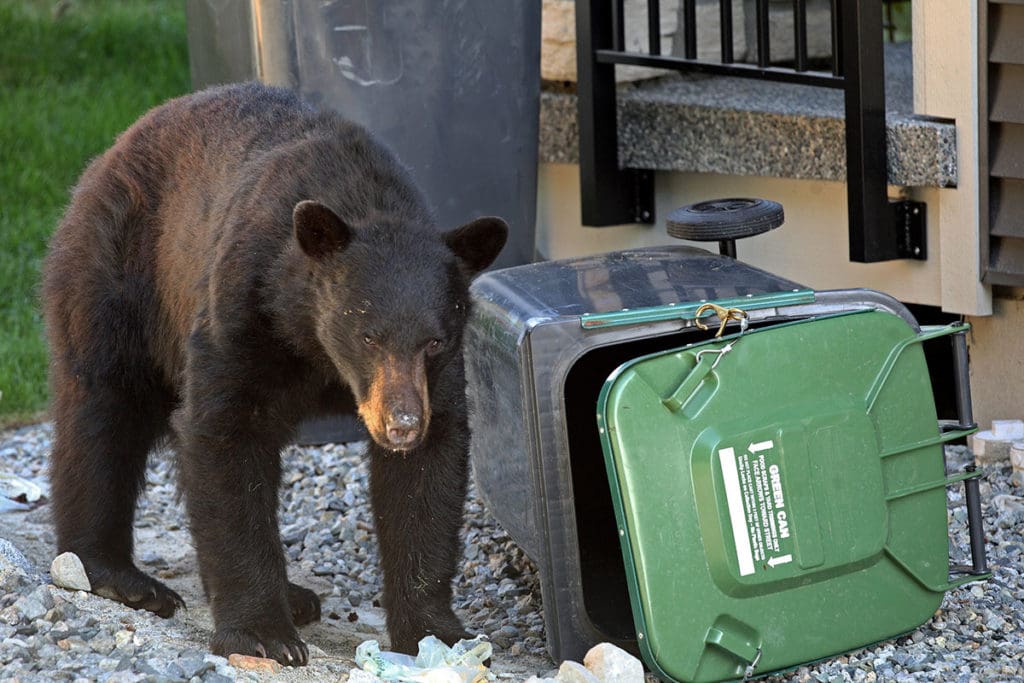
The common goal? Reduce conflict with predators
This project is based on the understanding that successful conservation programs and policies require attention to the reasons, or human-dimensions, that shape people’s willingness or resistance in adopting new practices for sharing landscapes with wildlife.
Allegra’s research asks: what drives individual ranches to adopt or avoid conflict-reduction tools and techniques? There are two effects that she’s interested in during her interviews.
The effectiveness of a certain technology often plays a big role in whether that technology is adopted — but not the only role. Adopting a new technology often comes with unintended consequences, or side effects, that can hinder a rancher’s success with that technology.
These side effects vary for each tool and technology, so Allegra’s work seeks to uncover the range of negative consequences and tradeoffs of adopting conflict-reduction tools.
One example of these side effects was when a rancher described what happened after they installed an electric fence. They had to adapt to new routines that involved checking and maintaining the fence and training ranch hands how to troubleshoot issues that arose. However, these maintenance tasks had an unexpected time commitment associated with them, because safety concerns often required two people to complete the work together, taking away another person from working on other tasks.
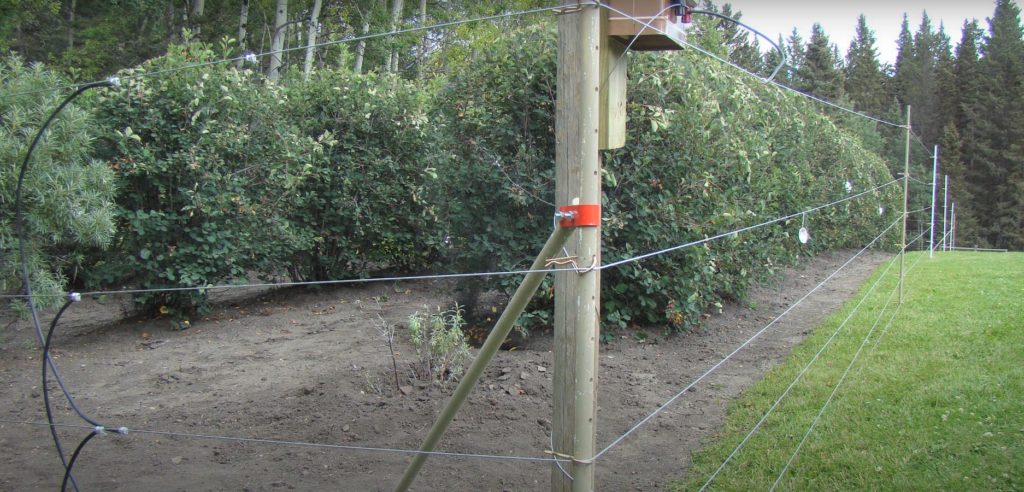
The other aspect Allegra’s interested in are symbolic meanings: what do conflict-reduction tools and technologies represent/symbolize? How does someone’s interpretation of the tool influence whether they adopt that tool/technology?
Bears are symbolic of different things for different people, and these symbols can influence how people think about wildlife on the landscape.
Conflict-reduction tools could also be endowed with these, and other meanings. Understanding the different meanings bears and conflict-reduction tools represent for different people, can help understand why people are adopting conflict-reduction tools.
Allegra seeks to figure out both what conflict-reduction tools symbolize and tools’ side effects to improve adoption rates.
As more people and more predators move onto rangelands, occasional clashing of cultural values can impact how ranchers interpret conflict with predators and how they think about conflict-reduction tools. Working directly with established community-based rangeland conservation groups could be the best way to find the most suitable tool for each ranch operation.
“Our goal is to research and highlight the successes and challenges that come with using these conflict-reduction tools,” Allegra says. “What we find is that no one-size-fits-all when it comes to tools. What works for one individual ranch may not work for the next. Considering social factors, like symbolic meanings, can help us to understand underlying hesitance towards conflict-reduction tools.”
Building on earlier research by others, Allegra meets with ranchers to ask about the conflict reduction tools they use/do not use. The reason this work centers on rural communities is to achieve an interconnected system of wildlands, waters, and wildlife — central to Y2Y’s mission — and because community members will have to work together to reach the common goal of conflict reduction.
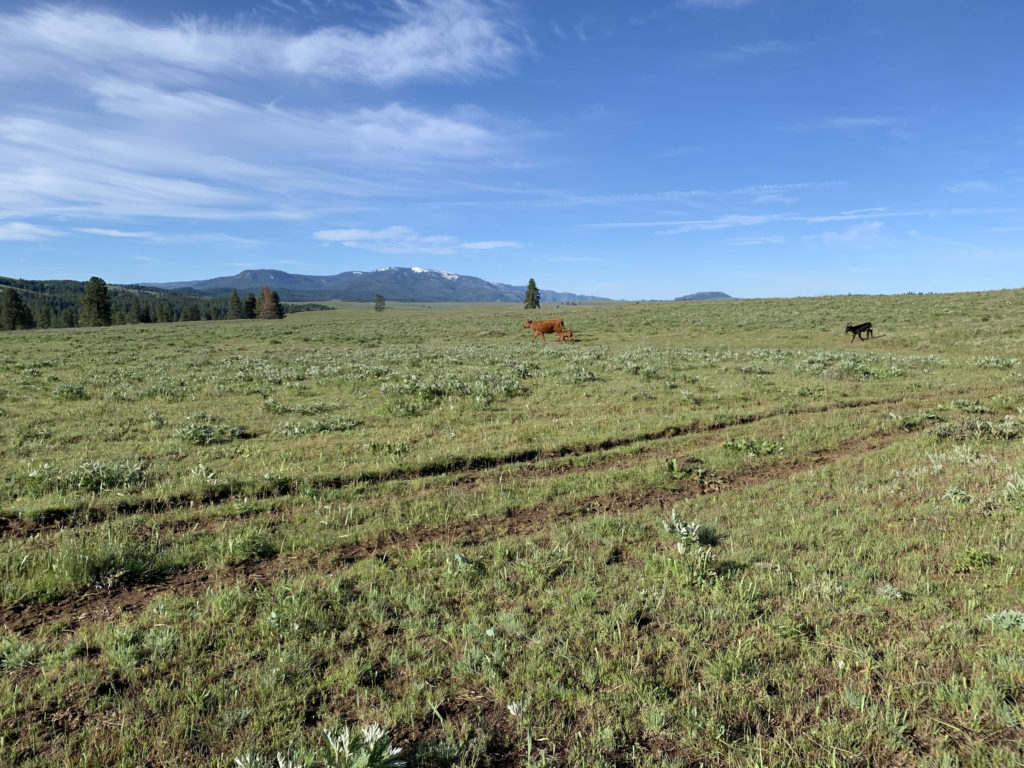
Working together on solutions
This research is incredibly important to advancing Y2Y’s mission to help people and nature thrive. Knowing why tools are preferred in coexistence measures is key for seeing them used daily.
“Rural communities that have more direct interactions with bears must be included and given a voice,” says Hannah Rasker, Y2Y’s U.S. program and adaptive management coordinator.
“Their success and livelihoods are central to the economic resilience and success for wildlife in the west, including grizzly bears. That starts with understanding their needs and the opportunities for common ground.”
Allegra‘s work draws on the research, support, experience and knowledge of many others advancing this work, including Morey Burnham and Darci Graves at Idaho State University, Alex Metcalf at the University of Montana, Matt Williamson at Boise State University, Katie Epstein at Cornell University, and Hannah Jaicks of Future West.
Once complete, the findings will inform Y2Y and project partners, as well as state agencies, policymakers, researchers, and other key decision-makers across the Northern Rockies. This will boost understanding of the critical tradeoffs — symbolic, financial, cultural, etc. — that could increase the use of nonlethal conflict reduction tools to enhance “the land in between” for people and grizzly bears alike.
This is invaluable information not only to those communities taking part in research, but the hundreds of others dealing with similar challenges across the Yellowstone to Yukon region, not to mention wildlife managers and government agencies tasked with helping progress this issue.
Allegra’s final report will highlight the successes and challenges that come with implementing conflict-reduction tools, as well as the unintended consequences that affect people’s willingness or resistance to adopt new conflict-reduction practices.
By working together on solutions, we can all be empowered to foster a thriving future for people and wildlife on these shared landscapes.
Tools people use to minimize conflicts with grizzly bears and other carnivores:
- Electric fencing: often used to protect calves in the spring
- “To-go” fencing: small packs of electric fencing designed to be mobile and used around a carcass to protect it from being eaten before the rancher returns to pick it up
- Livestock guardian dogs: specially trained canines go out with livestock on the range to patrol for predators
- Fladry: a special flagging to scare wolves, sometimes electrified and called turbofladry
- Range riders: folks on horseback, checking up on the livestock when they are out on the range
- Carcass compost pile: when dead cattle are left in the open, they attract predators. Instead, a compost pile of decaying livestock is protected by electric fencing to allow for natural breakdown
- Education and outreach
- Bear spray
- Bear-resistant trash cans
- Financial compensation: often paid to ranchers when they lose livestock to predators as a way to promote shared landscapes
The Sarah Baker Memorial Fund supports science by early-career researchers that advance Y2Y’s conservation strategy and result in tangible benefits within the region. Sarah Jocelyn Baker’s appreciation for the natural world and ability to find solutions resonate with the aspirations and vision of Y2Y. We are honored to carry her spirit forward through the Sarah Baker Memorial Fund. Thanks to a gift from her extended family, Y2Y can offer grants to post-secondary students and postdoctoral fellows pursuing environmentally related studies at post-secondary institutions in Canada or the United States.
